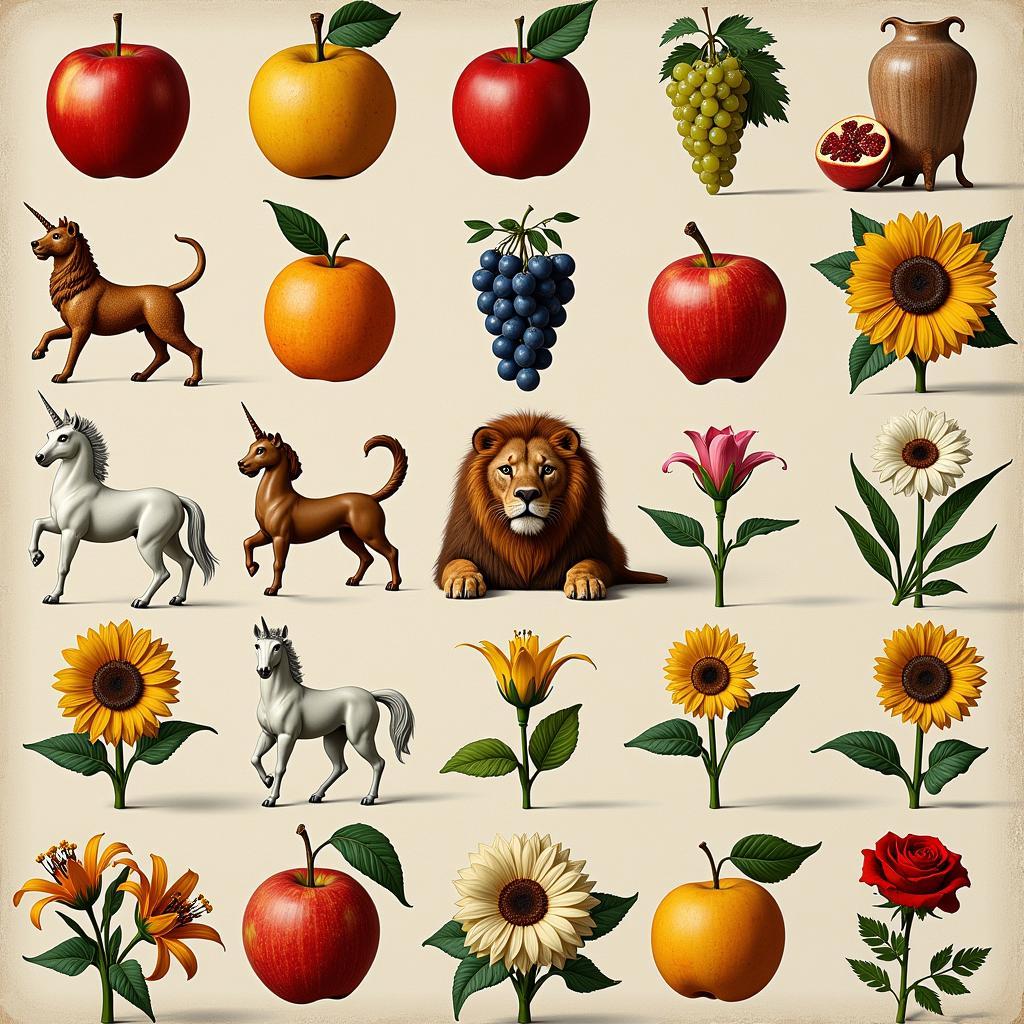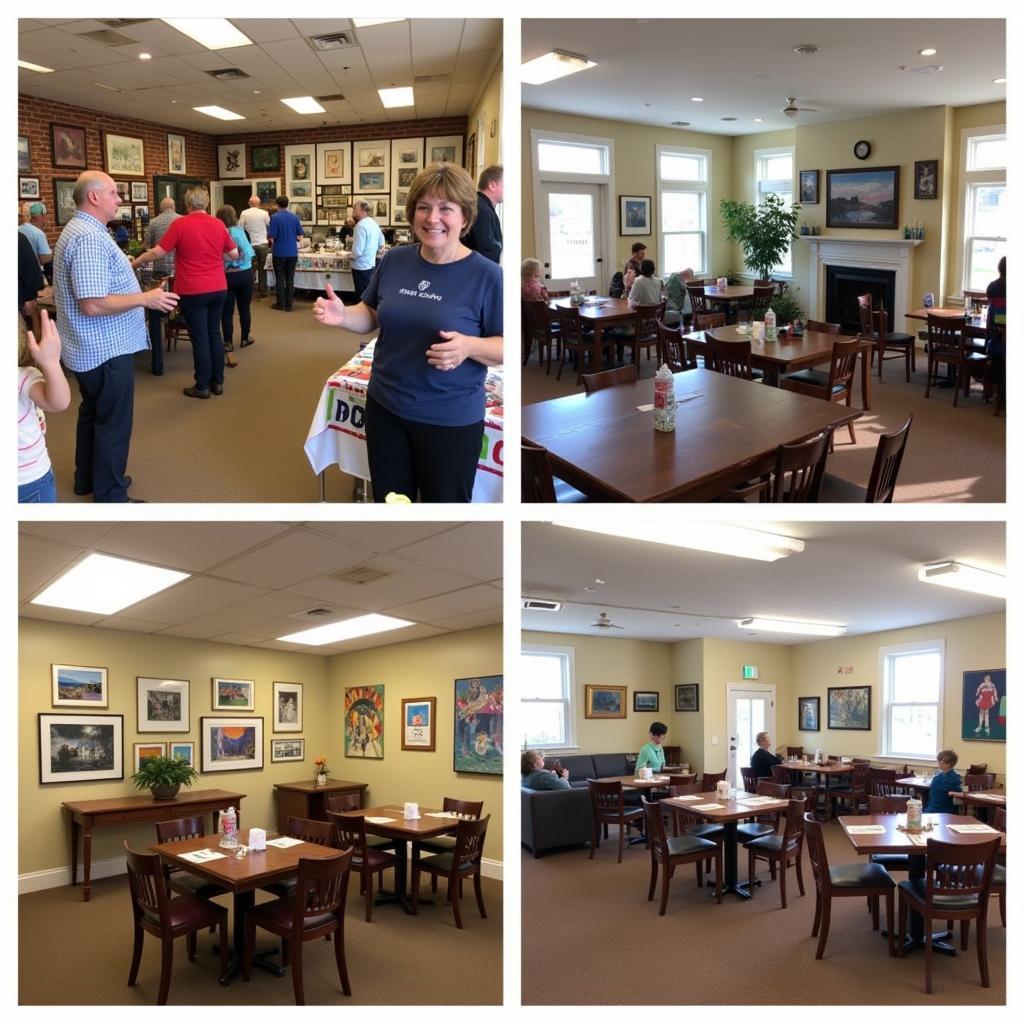Decoding Renaissance Art Symbols: A Guide to Iconography
Renaissance art, a period of vibrant artistic and intellectual rebirth, is rich with symbolism. These symbols, often drawn from classical mythology, biblical narratives, and allegorical traditions, add layers of meaning to the stunning visuals. Understanding these Renaissance Art Symbols unlocks a deeper appreciation for the masterpieces of this era and the cultural context in which they were created.
If you’re fascinated by the intricate details and hidden meanings within Renaissance art, then exploring its symbolic language is a rewarding journey. This guide will delve into some of the most common and significant symbols, offering a key to unlocking the stories within the canvases. For those interested in religious iconography, consider exploring Catholic art posters to further enhance your understanding.
Common Renaissance Art Symbols and Their Meanings
Renaissance artists employed a diverse range of symbols to convey complex ideas and narratives. Let’s explore some prominent examples:
-
Fruits: Fruits, particularly apples, grapes, and pomegranates, frequently appear in Renaissance paintings. Apples often symbolize the fall of man, while grapes represent the Eucharist and wine, signifying Christ’s sacrifice. Pomegranates, with their abundance of seeds, symbolize fertility and resurrection.
-
Animals: Animals played a significant role in Renaissance symbolism. Dogs often represent loyalty and fidelity, while lions symbolize strength and courage. The unicorn, a mythical creature, represents purity and grace, often associated with the Virgin Mary.
-
Flowers: Flowers, with their delicate beauty and ephemeral nature, held various symbolic meanings. Roses symbolize love and beauty, lilies represent purity and innocence, and sunflowers, always facing the sun, symbolize devotion and faith.
You might find depictions of these symbols and more in archangel raphael art, known for its rich iconography.
 Renaissance Art: Symbols of Fruits, Animals, and Flowers
Renaissance Art: Symbols of Fruits, Animals, and Flowers
Unveiling the Secrets of Religious Symbolism
Religious themes dominated Renaissance art, and understanding the symbolic language is crucial to interpreting these works. Here are some key religious symbols:
-
The Halo: A circle of light surrounding the head, the halo signifies holiness and divinity, typically used to depict Christ, the Virgin Mary, and saints.
-
The Cross: The most recognizable symbol of Christianity, the cross represents Christ’s sacrifice and redemption.
-
The Lamb: The lamb symbolizes innocence and sacrifice, often representing Christ as the “Lamb of God.”
Many representations of Our Lady of Sorrows incorporate such profound symbolism, as seen in art our lady of sorrows. These pieces often evoke a sense of deep contemplation and spiritual understanding.
Renaissance Art Symbols: What Did They Mean to the Artists?
For Renaissance artists, symbolism wasn’t merely decorative; it was a powerful tool for storytelling and conveying complex theological and philosophical concepts. It allowed them to engage viewers on multiple levels, inviting contemplation and interpretation.
Dr. Isabella Rossi, an expert in Renaissance iconography, explains, “Renaissance artists used symbolism as a sophisticated language, weaving intricate narratives within their artworks. They understood the power of visual metaphors to communicate profound ideas to their audience.”
Exploring Secular Symbolism in Renaissance Art
While religious themes were prevalent, secular symbolism also played a significant role. Classical mythology, allegorical figures, and objects from everyday life were imbued with symbolic meanings:
-
Laurel Wreaths: Symbolizing victory and achievement, laurel wreaths were often depicted on the heads of emperors, generals, and poets.
-
Swords: Representing power, justice, and military strength, swords were often carried by figures of authority.
-
Mirrors: Mirrors often symbolize self-reflection, vanity, and the fleeting nature of beauty.
Exploring diverse artistic expressions, such as Man City art, can offer a fresh perspective on how symbolism continues to evolve and resonate in contemporary contexts. The exploration of contrasting themes, like those found in antichrist art, can also provide a deeper understanding of the complex interplay of symbols and their interpretations.
Conclusion: The Enduring Power of Renaissance Art Symbols
Renaissance art symbols, with their rich layers of meaning, offer a window into the intellectual and spiritual world of the era. By understanding these symbols, we gain a deeper appreciation for the artistry and complexity of Renaissance masterpieces. They invite us to look beyond the surface and uncover the hidden stories within the art. So, the next time you encounter a Renaissance painting, take a closer look at the details – you might be surprised by what you discover.
FAQ
-
What is the most common symbol in Renaissance art? The halo, signifying holiness and divinity, is arguably the most prevalent.
-
Why did Renaissance artists use so much symbolism? Symbolism allowed them to convey complex narratives and ideas in a visually engaging way.
-
Where can I learn more about Renaissance art symbols? Art history books, museum websites, and online resources offer extensive information.
-
Are Renaissance art symbols still relevant today? Many symbols, like the dove representing peace, retain their cultural significance.
-
How can I identify symbols in Renaissance art? Start by familiarizing yourself with common symbols and their meanings, then look for patterns and relationships within the artwork.
-
What is the significance of colors in Renaissance art? Colors held symbolic meanings – blue often represented heaven, red symbolized passion, and gold represented divinity.
-
Did Renaissance artists invent these symbols? Many symbols were drawn from classical mythology, biblical narratives, and existing allegorical traditions.
Need further assistance? Contact us at Phone Number: 02462573573, Email: danteum@gmail.com Or visit our address: Savico Megamall, 7-9 Đ. Nguyễn Văn Linh, Gia Thụy, Long Biên, Hà Nội 10000, Việt Nam. We have a 24/7 customer support team.


